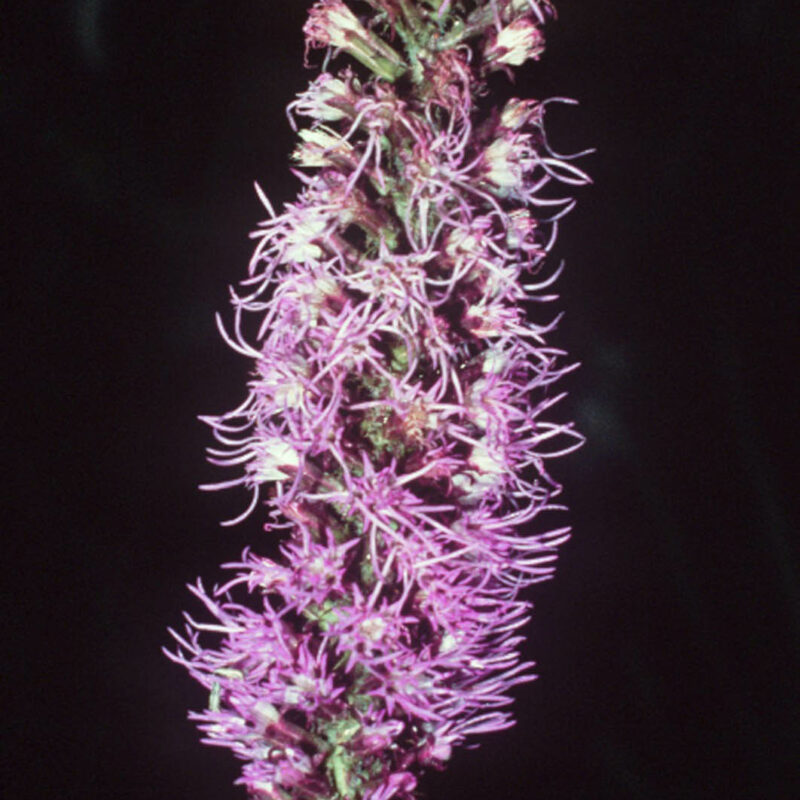Prairie Blazing StarLiatris pycnostachya
An erect, native perennial herb with unbranched stems that are often 3-4' tall. A good plant for moist and wet restorations of prairies and meadows. It is a wonderful butterfly plant and will be successful in rain gardens and other landscape designs where water fluctuation is minimal or dissipates in a day or less. Wind can damage this plant, so plant with other tall, sturdy plants and grasses, such as big bluestem. Many cultivars of this plant exist.
USDA symbol: LIPY
General Information
| Plant Type | Forb |
|---|---|
| Height | 4 to 5 feet |
| Light Exposure | Sun |
| Soil Moisture | Medium |
| Bloom Color | Purple |

Tolerances
| Flooding / Inundation Tolerance | Moderate |
|---|---|
| General Resilience | 5 |
| Salt Tolerance | Medium |
| Stress Tolerance | Drought Tolerant, Fire Tolerant, General Disturbance |
Pollinator Value: Very High
| Bloom Months | July to August |
|---|---|
| Larval Host of | Moths |
| Specific Pollinators Hosted | Papaipema beeriana, Schinia sanguinea |
| Pollinator Benefit | Insect Pollinated, Provides Nectar, Stem Nesting, Supports Generalists |
Project Planning
| Project Type | Rain Garden, Restoration, Sandy or Engineered Soils, Shoreline Buffer |
|---|---|
| Coefficient of Conservatism | 8 |
| Herbivore Sensitivity | Medium |
| Lifespan | Perennial |
| Rate of Spread | Slow |
| Soil Stabilization | Deep |
| Vegetative Reproduction | Clonal |
Range
| County | Anoka, Becker, Benton, Big Stone, Blue Earth, Brown, Chippewa, Clay, Clearwater, Cottonwood, Dakota, Dodge, Douglas, Faribault, Fillmore, Freeborn, Goodhue, Grant, Hennepin, Houston, Jackson, Lac qui Parle, Lake, Lincoln, Lyon, Mahnomen, Martin, McLeod, Meeker, Morrison, Mower, Murray, Nicollet, Nobles, Norman, Olmsted, Otter Tail, Pipestone, Polk, Pope, Ramsey, Red Lake, Redwood, Renville, Sherburne, Sibley, Stearns, Steele, Stevens, Swift, Todd, Wabasha, Waseca, Washington, Watonwan, Wilkin |
|---|---|
| Ecoregion | Driftless Area, Lake Agassiz Plain, North Central Hardwood Forests, Northern Glaciated Plains, Northern Lakes and Forests, Northern Minnesota Wetlands, Western Cornbelt Plains |
| Approximate Eco Province | Eastern Broadleaf Forest, Laurentian Mixed Forest, Prairie Parkland, Tallgrass Aspen Parklands |
